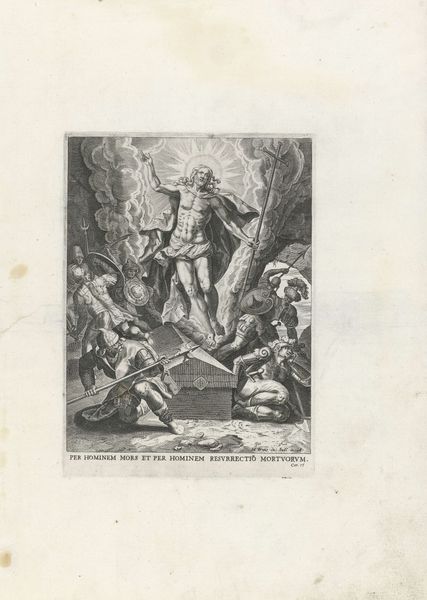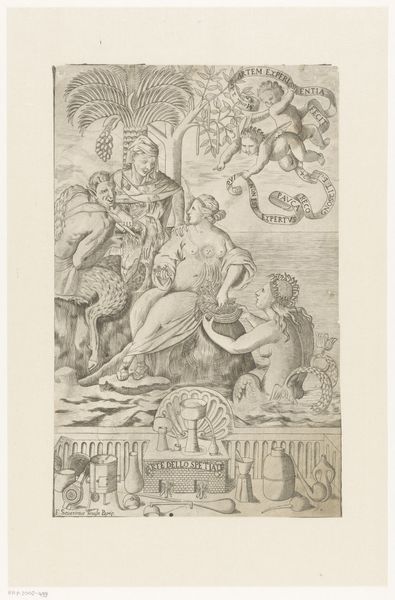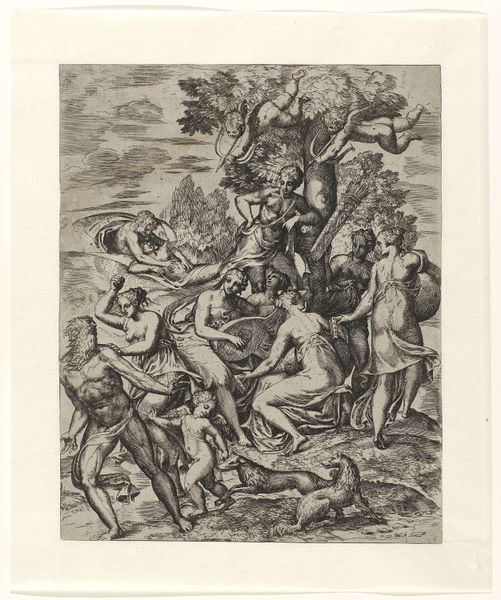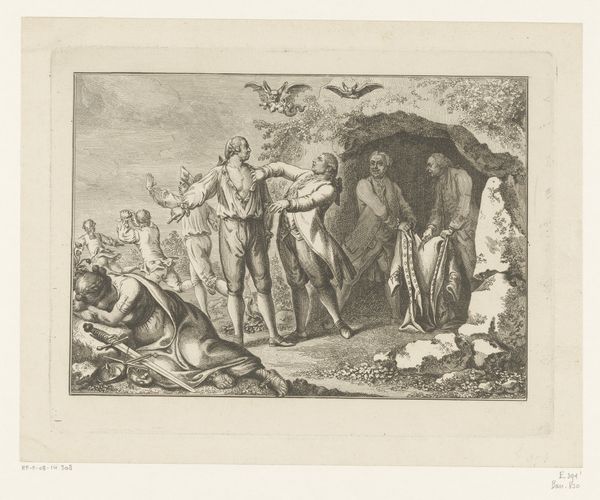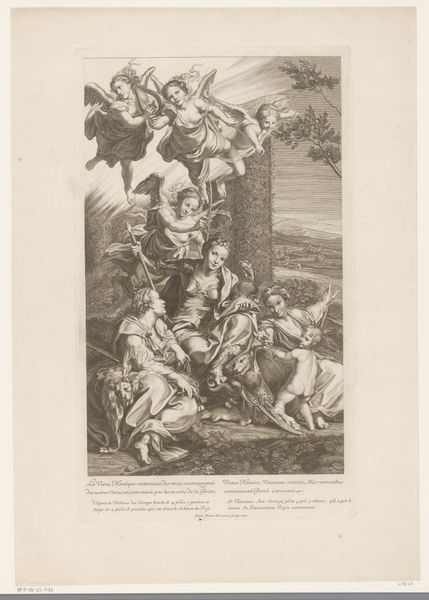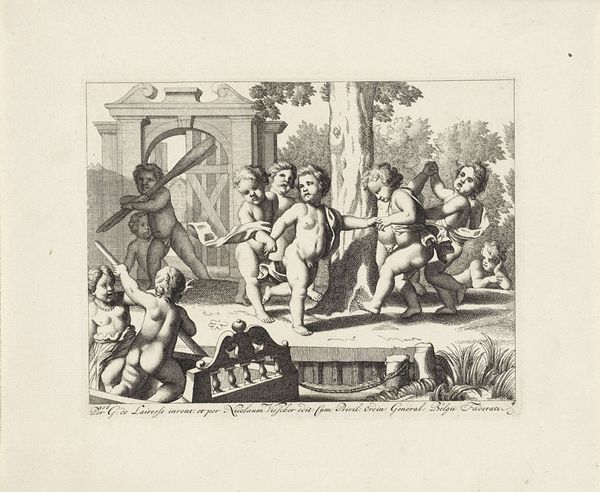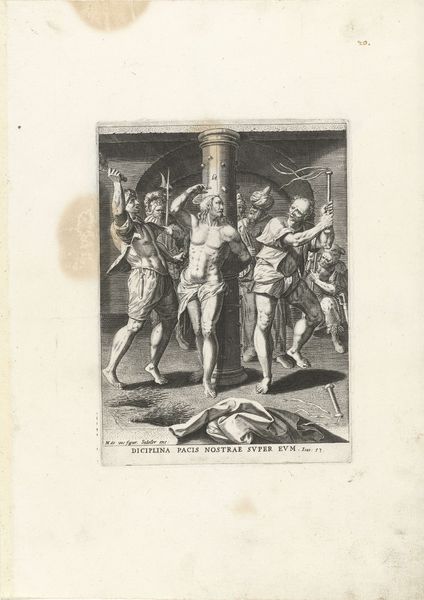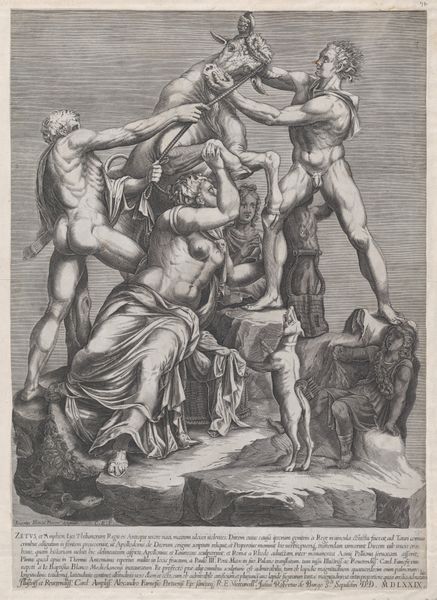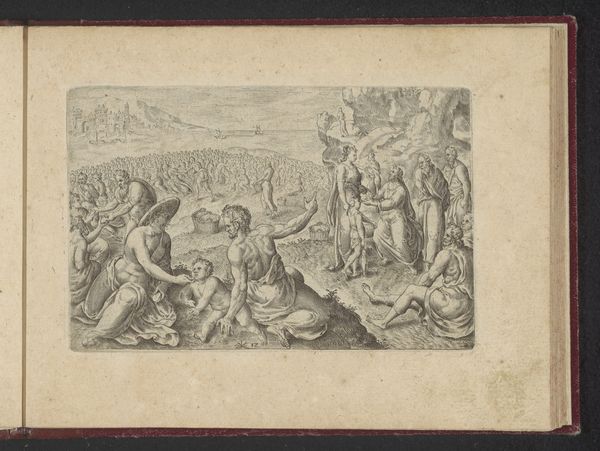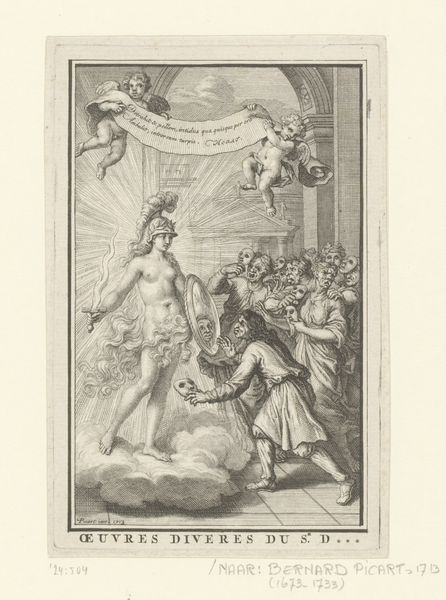
print, engraving
#
baroque
# print
#
figuration
#
line
#
history-painting
#
engraving
Dimensions: height 146 mm, width 90 mm
Copyright: Rijks Museum: Open Domain
Curator: So, here we have Michel Lasne's 1623 engraving, "Harangue van Thiamis en zijn metgezellen," a print residing here at the Rijksmuseum. What are your immediate thoughts? Editor: A classical fever dream. Look at the landscape – barren yet monumental. There’s a weird power dynamic baked in, but the question is, what are they listening to? Is it profound or a complete lie? Curator: Well, the title tells us it depicts Thiamis addressing his companions. Knowing Baroque art's fondness for drama and grandeur, my instinct tells me the answer may lie within. It certainly has that sweeping gesture, hasn’t it? That rhetorical flourish so popular at the time. Editor: Indeed. Notice how everyone is posed or placed; and the landscape and people rendered via stark line work—creating an antique feel. Also notice all those strange puffy sleeves! Are we sure this is serious, historical stuff, and not an absurdist commentary? Curator: Baroque art often used classical themes to comment on contemporary issues, so it might well be a layered approach. Thiamis himself looks rather self-assured, standing on that plinth, giving that heroic address, and then you’ve got that man slumped on the steps almost looking away, like he is either sad or being deliberately discourteous... And I am intrigued by the guy fondling the snake or twisting that snake. Is he wrestling with temptation or embracing dark knowledge? Editor: Precisely. Snakes have carried multiple meanings across different eras. I would argue, if the snake man isn’t an allegorical representation of deceit, he's certainly contemplating something ethically questionable! Given that Baroque art loved allegory, the layers of meaning become more and more. Curator: It seems to speak to ambition, leadership, and perhaps the precariousness of power, then. I always find engravings fascinating; there’s a graphic precision, a starkness of black and white, that pushes form and symbol right to the fore. Editor: It really makes one confront the symbols, doesn’t it? What is shown here is not some heroic history painting to be enjoyed but a commentary on the age and its obsessions—and the vanity and cruelty lurking within it.
Comments
No comments
Be the first to comment and join the conversation on the ultimate creative platform.
